-
 Bitcoin
Bitcoin $105,506.7886
5.08% -
 Ethereum
Ethereum $2,448.5436
10.64% -
 Tether USDt
Tether USDt $1.0004
0.00% -
 XRP
XRP $2.1938
10.73% -
 BNB
BNB $641.1726
2.97% -
 Solana
Solana $144.9271
9.87% -
 USDC
USDC $0.9999
-0.01% -
 TRON
TRON $0.2728
1.33% -
 Dogecoin
Dogecoin $0.1647
9.76% -
 Cardano
Cardano $0.5871
9.71% -
 Hyperliquid
Hyperliquid $37.7426
12.64% -
 Sui
Sui $2.7816
14.60% -
 Chainlink
Chainlink $13.5048
16.78% -
 Bitcoin Cash
Bitcoin Cash $450.1369
1.86% -
 UNUS SED LEO
UNUS SED LEO $9.1416
0.96% -
 Stellar
Stellar $0.2478
8.93% -
 Avalanche
Avalanche $18.2644
10.99% -
 Toncoin
Toncoin $2.9149
5.72% -
 Shiba Inu
Shiba Inu $0.0...01172
9.01% -
 Hedera
Hedera $0.1526
13.01% -
 Litecoin
Litecoin $84.6386
5.44% -
 Monero
Monero $315.4266
6.30% -
 Ethena USDe
Ethena USDe $1.0006
0.01% -
 Polkadot
Polkadot $3.4824
10.54% -
 Dai
Dai $1.0000
-0.02% -
 Bitget Token
Bitget Token $4.2707
5.83% -
 Uniswap
Uniswap $7.0582
15.65% -
 Pepe
Pepe $0.0...01003
13.82% -
 Pi
Pi $0.5454
9.30% -
 Aave
Aave $263.4696
17.20%
What does it mean that the ADX in the DMI indicator breaks through 25?
When the ADX crosses above 25, it signals a strong trend is emerging, helping crypto traders confirm momentum and make informed decisions.
Jun 24, 2025 at 06:21 pm
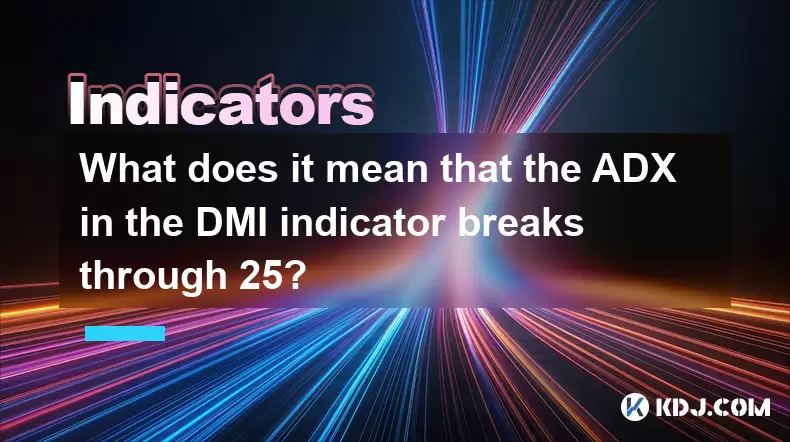
Understanding the DMI Indicator and Its Components
The Directional Movement Index (DMI) is a technical analysis tool used to identify the strength and direction of a trend in cryptocurrency markets. The indicator consists of two primary lines: the Positive Directional Indicator (+DI) and the Negative Directional Indicator (-DI). These lines help traders determine whether an asset is trending upward or downward. Additionally, the ADX line (Average Directional Index) measures the strength of the trend, regardless of its direction.
In the context of cryptocurrencies like Bitcoin or Ethereum, the DMI indicator is particularly useful due to the volatile nature of digital assets. Traders rely on this tool to assess whether a price movement has enough momentum to justify entering a trade.
Important Note: While +DI and -DI focus on the direction of the trend, the ADX line focuses solely on the strength of the trend.
What Does It Mean When ADX Breaks Through 25?
When the ADX line crosses above 25, it signals that a strong trend may be emerging in the market. This level is widely accepted among traders as a threshold for determining whether a trend is gaining sufficient strength to be considered valid.
- A rising ADX above 25 indicates increasing trend strength.
- If the ADX remains below 25, the trend is generally seen as weak or non-existent.
- A break above 25 suggests that either the bulls or bears are gaining control of the market.
For example, if Bitcoin's ADX rises from 20 to 26 while the +DI line is above the -DI line, it could indicate a strengthening uptrend.
Key Insight: The ADX does not indicate the direction of the trend—only its strength. Therefore, traders must look at the relationship between +DI and -DI to understand the direction.
How to Interpret ADX Above 25 in Cryptocurrency Trading
In cryptocurrency trading, interpreting the ADX above 25 requires careful attention to the interplay between all three components of the DMI:
- +DI Line Above -DI Line: Suggests a potential uptrend with strong momentum when combined with ADX above 25.
- -DI Line Above +DI Line: Indicates a possible downtrend gaining strength if the ADX is also above 25.
- ADX Continues Rising: Confirms that the trend is strengthening and likely to continue.
Traders often use this information to time entries or exits in the market. For instance, during a bullish phase in Ethereum, if the ADX breaks 25 and stays above it while +DI is dominant, it can serve as a confirmation signal for long positions.
Practical Steps to Use ADX Breakthrough at 25 in Trading Strategies
Here’s how you can incorporate the ADX crossing above 25 into your crypto trading strategy:
- Step 1 – Add the DMI Indicator: Open your preferred charting platform (e.g., TradingView), select the asset you're analyzing, and apply the DMI indicator to the chart.
- Step 2 – Monitor ADX Level: Watch the ADX line closely. Wait until it crosses above 25 from below.
- Step 3 – Check +DI and -DI Crossovers: Determine the direction of the trend by observing whether +DI is above or below -DI.
- Step 4 – Confirm with Price Action: Look for candlestick patterns or volume spikes that support the new trend.
- Step 5 – Set Entry and Exit Points: Enter a trade once the trend direction is confirmed and set stop-loss and take-profit levels based on your risk tolerance.
This method helps traders avoid false signals and ensures they only engage in trades with strong trend validation.
Common Misinterpretations of ADX Crossing 25
Many novice traders fall into common traps when interpreting the ADX crossover above 25:
- Assuming It’s a Buy/Sell Signal: The ADX alone doesn’t tell you whether to buy or sell—it only tells you that a trend may be developing.
- Ignoring Timeframes: A breakout above 25 on a 1-hour chart might not carry the same weight as one on a daily chart. Always consider the timeframe before making decisions.
- Overlooking Market Conditions: In highly volatile crypto markets, ADX can spike above 25 quickly but may not sustain the trend, leading to whipsaws.
It’s essential to combine ADX with other indicators such as RSI or moving averages to filter out noise and improve accuracy.
Frequently Asked Questions
Q: Can ADX stay above 25 during a sideways market?
A: Yes, especially in volatile crypto markets. Even if the price isn’t moving significantly, short-term directional movements can cause ADX to rise temporarily above 25 without forming a clear trend.
Q: Is the 25 threshold fixed for all cryptocurrencies?
A: While 25 is a commonly used benchmark, some traders adjust it based on asset volatility. More volatile altcoins may see higher thresholds being applied for stronger trend confirmation.
Q: How does ADX compare with other trend indicators like MACD?
A: Unlike MACD, which provides both trend direction and momentum through crossovers and histogram changes, ADX focuses purely on trend strength without indicating direction.
Q: Should I always wait for ADX to cross 25 before entering a trade?
A: Not necessarily. Some traders enter earlier based on DI crossovers and use ADX as a confirming tool. However, waiting for ADX to confirm trend strength can reduce false signals.
Disclaimer:info@kdj.com
The information provided is not trading advice. kdj.com does not assume any responsibility for any investments made based on the information provided in this article. Cryptocurrencies are highly volatile and it is highly recommended that you invest with caution after thorough research!
If you believe that the content used on this website infringes your copyright, please contact us immediately (info@kdj.com) and we will delete it promptly.
- BlockDAG's Bold Move: A $100 Million Token Airdrop Fuels Ecosystem Growth
- 2025-06-25 00:45:12
- Aero Crypto (AERO): 100x Altcoin or Just Jumped 14%? Decoding the Hype
- 2025-06-25 00:25:12
- Banish Flies with a Coin Trick? The Buzz Around This Bizarre Hack
- 2025-06-25 00:45:12
- Bitcoin, Mortgages, and Finance: A New Era?
- 2025-06-25 00:25:12
- Mastercard, Fiserv, and Stablecoins: A New Era of Payments?
- 2025-06-25 00:55:12
- Circle Stock, Stablecoin Competition, and Wall Street: A New York Minute
- 2025-06-25 00:55:12
Related knowledge

What does it mean that the ATR indicator suddenly doubles after hitting a new low this year?
Jun 24,2025 at 11:57pm
Understanding the ATR IndicatorThe Average True Range (ATR) is a technical analysis indicator used to measure market volatility. Developed by J. Welles Wilder, ATR calculates the average price range between a security’s high and low over a specific period—typically 14 periods. It does not indicate the direction of price movement but rather how volatile ...
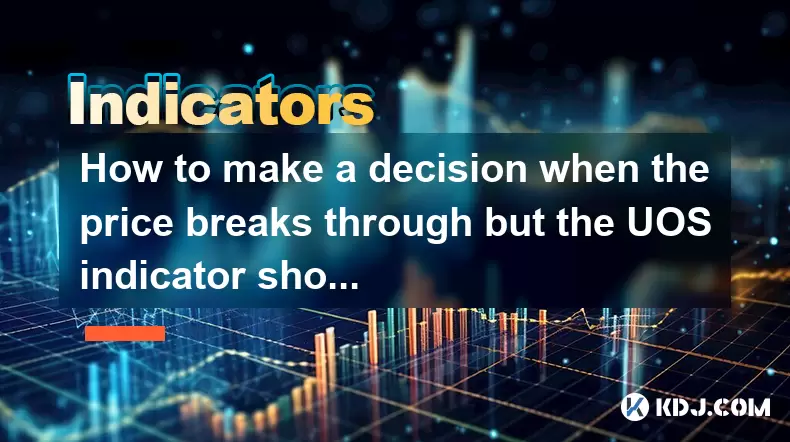
How to make a decision when the price breaks through but the UOS indicator shows a top divergence?
Jun 24,2025 at 11:42pm
Understanding the UOS Indicator and Price BreakthroughsThe Ultimate Oscillator (UOS) is a momentum oscillator that combines multiple timeframes to provide a more accurate picture of market momentum. When traders observe a price breakthrough — where the price moves above a key resistance level — but the UOS indicator shows a top divergence, it creates a ...

How to judge that the price breaks through the cloud but the hysteresis line has not turned?
Jun 24,2025 at 10:43pm
Understanding the Ichimoku Cloud and Its ComponentsIn technical analysis, the Ichimoku Cloud, also known as the Ichimoku Kinko Hyo, is a powerful tool used by traders to gauge momentum, trend direction, and potential support or resistance levels. The cloud itself is composed of multiple lines: Tenkan-sen (conversion line), Kijun-sen (base line), Senkou ...
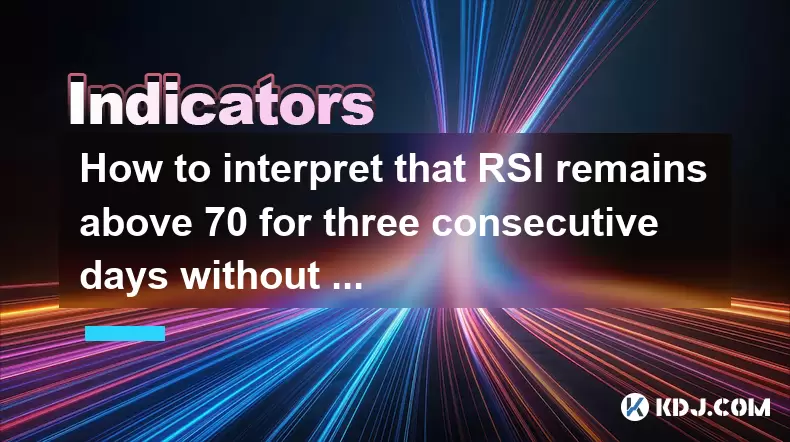
How to interpret that RSI remains above 70 for three consecutive days without falling back?
Jun 24,2025 at 11:14pm
Understanding the RSI Indicator in Cryptocurrency TradingThe Relative Strength Index (RSI) is a momentum oscillator used to measure the speed and change of price movements. Typically, it ranges from 0 to 100 and is widely used by traders to identify overbought or oversold conditions in an asset. In cryptocurrency trading, where volatility is high and tr...
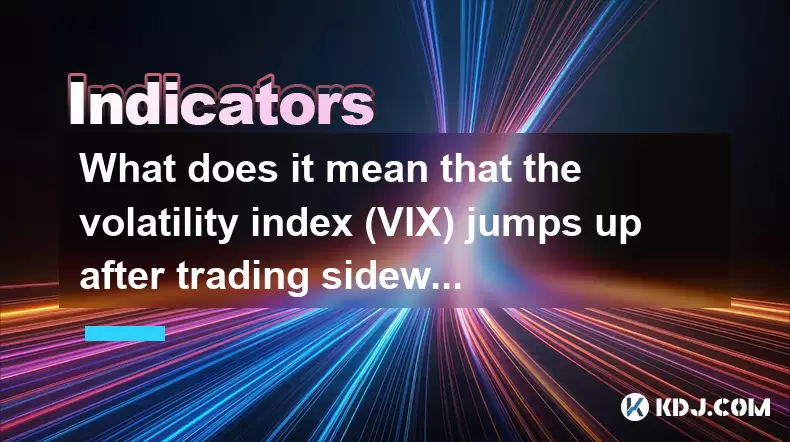
What does it mean that the volatility index (VIX) jumps up after trading sideways at a low level?
Jun 24,2025 at 09:35pm
Understanding the Volatility Index (VIX)The Volatility Index (VIX), often referred to as the 'fear gauge,' is a real-time market index that represents the market's expectation of 30-day forward-looking volatility. It is calculated by the Chicago Board Options Exchange (CBOE) based on the price inputs of S&P 500 index options. In the context of cryptocur...
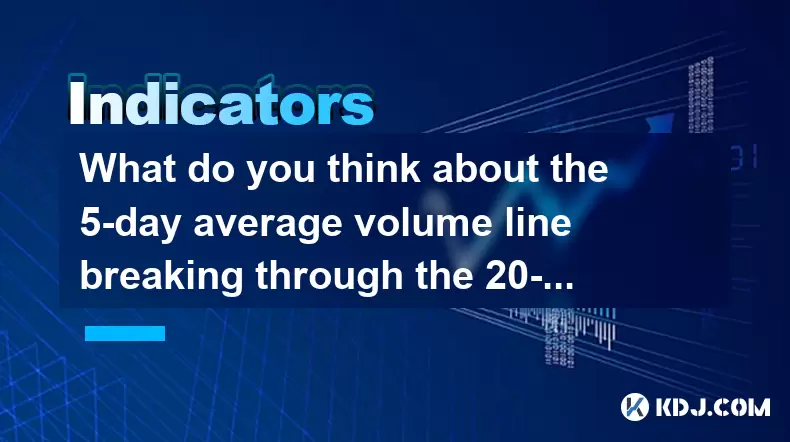
What do you think about the 5-day average volume line breaking through the 20-day average volume line but the price is stagnant?
Jun 24,2025 at 11:50pm
Understanding Volume Indicators in Cryptocurrency TradingIn cryptocurrency trading, volume is one of the most crucial indicators that traders rely on to gauge market sentiment and potential price movements. Volume represents the total number of assets traded over a specific period, and when analyzed using moving averages like the 5-day and 20-day volume...

What does it mean that the ATR indicator suddenly doubles after hitting a new low this year?
Jun 24,2025 at 11:57pm
Understanding the ATR IndicatorThe Average True Range (ATR) is a technical analysis indicator used to measure market volatility. Developed by J. Welles Wilder, ATR calculates the average price range between a security’s high and low over a specific period—typically 14 periods. It does not indicate the direction of price movement but rather how volatile ...

How to make a decision when the price breaks through but the UOS indicator shows a top divergence?
Jun 24,2025 at 11:42pm
Understanding the UOS Indicator and Price BreakthroughsThe Ultimate Oscillator (UOS) is a momentum oscillator that combines multiple timeframes to provide a more accurate picture of market momentum. When traders observe a price breakthrough — where the price moves above a key resistance level — but the UOS indicator shows a top divergence, it creates a ...

How to judge that the price breaks through the cloud but the hysteresis line has not turned?
Jun 24,2025 at 10:43pm
Understanding the Ichimoku Cloud and Its ComponentsIn technical analysis, the Ichimoku Cloud, also known as the Ichimoku Kinko Hyo, is a powerful tool used by traders to gauge momentum, trend direction, and potential support or resistance levels. The cloud itself is composed of multiple lines: Tenkan-sen (conversion line), Kijun-sen (base line), Senkou ...

How to interpret that RSI remains above 70 for three consecutive days without falling back?
Jun 24,2025 at 11:14pm
Understanding the RSI Indicator in Cryptocurrency TradingThe Relative Strength Index (RSI) is a momentum oscillator used to measure the speed and change of price movements. Typically, it ranges from 0 to 100 and is widely used by traders to identify overbought or oversold conditions in an asset. In cryptocurrency trading, where volatility is high and tr...

What does it mean that the volatility index (VIX) jumps up after trading sideways at a low level?
Jun 24,2025 at 09:35pm
Understanding the Volatility Index (VIX)The Volatility Index (VIX), often referred to as the 'fear gauge,' is a real-time market index that represents the market's expectation of 30-day forward-looking volatility. It is calculated by the Chicago Board Options Exchange (CBOE) based on the price inputs of S&P 500 index options. In the context of cryptocur...

What do you think about the 5-day average volume line breaking through the 20-day average volume line but the price is stagnant?
Jun 24,2025 at 11:50pm
Understanding Volume Indicators in Cryptocurrency TradingIn cryptocurrency trading, volume is one of the most crucial indicators that traders rely on to gauge market sentiment and potential price movements. Volume represents the total number of assets traded over a specific period, and when analyzed using moving averages like the 5-day and 20-day volume...
See all articles
























































































